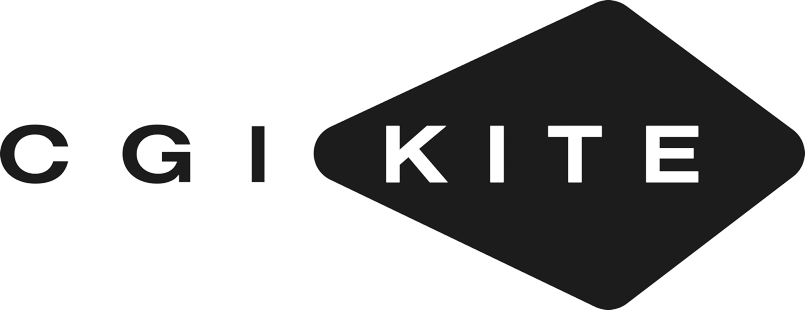21 March, 2023
AI for CGI: Advancements and Opportunities

Computer Generated Imagery (CGI) has become an integral part of various industries, including film and television, gaming, and advertising. As technology continues to advance, the use of artificial intelligence (AI) in CGI has become increasingly prevalent. AI has the potential to revolutionize the way CGI is produced and consumed, providing a range of benefits to both creators and consumers. In this article, we will explore the advancements in AI for CGI and the opportunities it presents for the industry.
Automating CGI with AI
AI is being used in several areas of CGI production, including animation, visual effects, and texture mapping. AI algorithms can automate several aspects of CGI production, including creating 3D models, generating realistic textures, and animating complex scenes. AI can also be used to enhance the realism of CGI, making it more immersive and believable. One of the primary areas where AI is used in CGI is animation. Animators can use AI algorithms to automate the animation process by training the algorithm to recognize and generate specific movements and actions. This approach can save a significant amount of time and effort, allowing animators to focus on other aspects of the animation, such as character design or storyboarding.
AI is also used in visual effects, where it can automate the process of compositing and rendering complex scenes. For example, AI can be used to generate realistic background scenery or special effects, such as explosions or fire. This can significantly reduce the time and effort required to create complex visual effects, while also increasing the level of realism and believability of the final output.
Texture mapping is another area where AI is being used in CGI. AI algorithms can analyze vast amounts of data to generate highly realistic textures for 3D models, such as skin, hair, or fabric. This can be a time-consuming and challenging process for human artists, but AI can automate it and produce highly accurate and detailed textures.
Finally, AI can be used to enhance the realism of CGI by improving the quality of lighting and shadows. AI algorithms can analyze the lighting in a scene and generate highly accurate lighting and shadow effects that match the real world. This can make CGI scenes look more natural and immersive, providing a more engaging experience for viewers.
AI is also used in visual effects, where it can automate the process of compositing and rendering complex scenes. For example, AI can be used to generate realistic background scenery or special effects, such as explosions or fire. This can significantly reduce the time and effort required to create complex visual effects, while also increasing the level of realism and believability of the final output.
Texture mapping is another area where AI is being used in CGI. AI algorithms can analyze vast amounts of data to generate highly realistic textures for 3D models, such as skin, hair, or fabric. This can be a time-consuming and challenging process for human artists, but AI can automate it and produce highly accurate and detailed textures.
Finally, AI can be used to enhance the realism of CGI by improving the quality of lighting and shadows. AI algorithms can analyze the lighting in a scene and generate highly accurate lighting and shadow effects that match the real world. This can make CGI scenes look more natural and immersive, providing a more engaging experience for viewers.
3D apartment floor plan creation
Recent advancements in AI technology have allowed for more sophisticated and nuanced applications in CGI production. One of the most significant advancements has been in the use of generative adversarial networks (GANs) to create realistic images and videos. GANs use two neural networks, a generator, and a discriminator, to create new images that are indistinguishable from real ones. This technology has been used in the film industry to create realistic backgrounds and landscapes.
Another advancement in AI for CGI is the use of machine learning algorithms to analyze and categorize vast amounts of data. This technology can be used to train AI systems to recognize and classify different objects and materials, making it easier to create realistic 3D models and textures. Machine learning can also be used to create predictive models that anticipate future trends in CGI production and consumption.
Another advancement in AI for CGI is the use of machine learning algorithms to analyze and categorize vast amounts of data. This technology can be used to train AI systems to recognize and classify different objects and materials, making it easier to create realistic 3D models and textures. Machine learning can also be used to create predictive models that anticipate future trends in CGI production and consumption.
Opportunities for the Industry
AI presents numerous opportunities for the CGI industry. One of the most significant opportunities is the ability to automate several aspects of the CGI production process, reducing the need for manual labor and increasing efficiency. This, in turn, can reduce costs and production times, making it easier to create high-quality CGI content.
Another opportunity presented by AI is the ability to personalize the user experience. AI algorithms can analyze user data to create customized content, which can help engage and retain users. For example, AI can be used to create personalized avatars in games or generate custom 3D models based on user preferences.
Finally, AI can help reduce the carbon footprint of CGI production. By automating and optimizing the production process, AI can reduce the amount of energy and resources needed to create CGI content. This can help reduce the environmental impact of the industry and promote sustainability.
Another opportunity presented by AI is the ability to personalize the user experience. AI algorithms can analyze user data to create customized content, which can help engage and retain users. For example, AI can be used to create personalized avatars in games or generate custom 3D models based on user preferences.
Finally, AI can help reduce the carbon footprint of CGI production. By automating and optimizing the production process, AI can reduce the amount of energy and resources needed to create CGI content. This can help reduce the environmental impact of the industry and promote sustainability.

Challenges and Limitations
While AI presents numerous opportunities for the CGI industry, there are also challenges and limitations to consider. One of the most significant challenges is the need for vast amounts of data to train AI systems effectively. This can be a challenge for smaller companies that may not have access to the same level of data as larger organizations.
Another challenge is the potential for AI to replace human workers. While AI can automate several aspects of the CGI production process, there will always be a need for human creativity and innovation in the industry. It is essential to strike a balance between using AI to optimize production and preserving the human touch that makes CGI unique.
Finally, there is concern about the accuracy and reliability of AI-generated content. While AI algorithms can create realistic images and videos, there is always the potential for errors or inaccuracies. It is crucial to ensure that AI-generated content is thoroughly examined and tested to ensure its quality and accuracy.
Another challenge is the potential for AI to replace human workers. While AI can automate several aspects of the CGI production process, there will always be a need for human creativity and innovation in the industry. It is essential to strike a balance between using AI to optimize production and preserving the human touch that makes CGI unique.
Finally, there is concern about the accuracy and reliability of AI-generated content. While AI algorithms can create realistic images and videos, there is always the potential for errors or inaccuracies. It is crucial to ensure that AI-generated content is thoroughly examined and tested to ensure its quality and accuracy.
Our Experience with AI in CGI
In recent years, the use of Artificial Intelligence (AI) has been gaining momentum in various industries, including the field of 3D rendering services. At CGI Kite we also have been experimenting with AI in the workflow. According to Sergey , our 3D Team-Lead at CGI Kite, we have been able to explore the possibilities and limitations of the technology incorporating Midjourney and Invoke AI neural networks.
One significant limit that we encountered while running experiments was the maximum image size that AI can generate. Sergey Kozynskyi notes that "the main limit is the size of the produced image - 512x512, as it may in some cases produce blurred images compared to those rendered conventionally." However, he adds that "despite this limitation, AI can still generate informative references that can help in creating architectural models."
CGI Kite has also experimented with generating conceptual projects without a clear brief using AI. Sergey notes that "the results were surreal and imprecise, but still are at a good use for further processing or developing ideas of inspiration." This approach demonstrates how AI can be a useful tool in the creative process.
One significant limit that we encountered while running experiments was the maximum image size that AI can generate. Sergey Kozynskyi notes that "the main limit is the size of the produced image - 512x512, as it may in some cases produce blurred images compared to those rendered conventionally." However, he adds that "despite this limitation, AI can still generate informative references that can help in creating architectural models."
CGI Kite has also experimented with generating conceptual projects without a clear brief using AI. Sergey notes that "the results were surreal and imprecise, but still are at a good use for further processing or developing ideas of inspiration." This approach demonstrates how AI can be a useful tool in the creative process.

However, AI in 3D rendering is not without its limitations. Sergey notes that there were few cases of encountering difficulties when working with specific types of architecture.
As per Sergey's insights, various experiments that his team has conducted using AI in CGI, such as working with facade materials, building floors, and futuristic architecture. While some of these experiments have led to the generation of useful textures, it has also been acknowledged that there are limitations to AI's ability to produce desired outputs for certain types of architecture.
Despite these limitations, CGI Kite has also had some successes with AI technology. For instance, we have been able to use AI to generate textures that can be used for models. "This is a useful tool for developing references and increasing resolution," Sergey says. "However, we are still waiting for new advancements in the field, such as post-processing and generating node technology announced recently."
Overall, the use of AI in 3D rendering services has its pros and cons. While it can provide useful references and inspiration, it also has limitations in producing specific outputs for certain types of architecture. As the technology continues to develop, it will be interesting to see how CGI Kite may incorporate AI into built workflows to improve provided services.
As per Sergey's insights, various experiments that his team has conducted using AI in CGI, such as working with facade materials, building floors, and futuristic architecture. While some of these experiments have led to the generation of useful textures, it has also been acknowledged that there are limitations to AI's ability to produce desired outputs for certain types of architecture.
Despite these limitations, CGI Kite has also had some successes with AI technology. For instance, we have been able to use AI to generate textures that can be used for models. "This is a useful tool for developing references and increasing resolution," Sergey says. "However, we are still waiting for new advancements in the field, such as post-processing and generating node technology announced recently."
Overall, the use of AI in 3D rendering services has its pros and cons. While it can provide useful references and inspiration, it also has limitations in producing specific outputs for certain types of architecture. As the technology continues to develop, it will be interesting to see how CGI Kite may incorporate AI into built workflows to improve provided services.
Conclusion: Embracing a Bright Future for CGI with AI
AI has the potential to transform the way CGI is produced and consumed. With advancements in AI technology, it is becoming easier to automate several aspects of CGI production and improve the realism and personalization of CGI content. While there are challenges and limitations to consider, the opportunities presented by AI for the CGI industry are numerous. As the technology continues to evolve, we can expect to see even more advancements and innovations in the field.
At CGI Kite, we are committed to staying at the forefront of these advancements and leveraging AI to provide the best possible CGI solutions to our clients. Whether it's creating stunning visual effects, realistic 3D models, or immersive gaming environments, we are dedicated to pushing the boundaries of what is possible with AI and CGI.
By embracing AI technology and its potential to revolutionize CGI, we can continue to drive innovation and growth in the industry, creating new and exciting opportunities for creators and consumers alike. The future of CGI is bright, and we are excited to be a part of it
At CGI Kite, we are committed to staying at the forefront of these advancements and leveraging AI to provide the best possible CGI solutions to our clients. Whether it's creating stunning visual effects, realistic 3D models, or immersive gaming environments, we are dedicated to pushing the boundaries of what is possible with AI and CGI.
By embracing AI technology and its potential to revolutionize CGI, we can continue to drive innovation and growth in the industry, creating new and exciting opportunities for creators and consumers alike. The future of CGI is bright, and we are excited to be a part of it
Did you like this article?
Follow us
Read more articles




